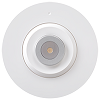Infrared radiation
Electromagnetic waves with a wavelength of about 0.7 to 1000 μm, just outside the red range of visible light. Infrared radiation is characterized by high thermal conductivity. It can be further classified into near-infrared, mid-infrared, and far-infrared in ascending order of wavelength. Near-infrared radiation is used by remote controls and surveillance cameras, mid-infrared for temperature measurement, and far-infrared by heaters.
- Electromagnetic waves with various properties come from all objects
- Such familiar products, too! What infrared radiation can do
- Array sensors for the environment and as a COVID-19 countermeasure

Electromagnetic waves with various properties come from all objects
Infrared radiation is a term often seen in daily life. Not so long ago, mobile phones used infrared beams for communication, and many people may have seen “far-infrared” written on heaters and cooking appliances. While the wavelength of the infrared portion of the electromagnetic wave spectrum is approximately 0.7–1000 micrometers (μm), the wavelength of light that humans can see is about 0.3 μm (purple) to 0.7 μm (red), so infrared light is invisible. It is called infrared because the wavelength is outside the red range.
Actually, even people, as well as animals, machines, walls and ceilings of rooms, and all other objects emit infrared radiation. It is part of the thermal energy generated by the vibrational motion of the molecules that make up an object, motion that is converted into radiant energy. The higher the temperature of an object, the more radiation it emits. Thermography uses this feature to measure the temperature of an object based on the amount of infrared radiation emitted.
Also, when infrared radiation hits an object, some of it is reflected or transmitted, but some is absorbed by the object, amplifying the molecular motion inside to generate heat. The reason why infrared radiation is used in heating and cooking appliances is that the infrared radiation itself does not contain heat, but heat is generated by applying the infrared radiation.
Such familiar products, too! What infrared radiation can do
Infrared radiation can be even further classified according to wavelength as near, short-wavelength, medium wavelength, long wavelength, and far, each of which has different properties.
Near-infrared light has a wavelength range closest to that of visible light and has similar properties. Near-infrared radiation is light that is close to the red color of visible light. It can be captured by cameras but is invisible to the human eye. Night-vision cameras use these characteristics.
In situations where it is not possible to illuminate the surroundings brightly, such as when using surveillance cameras at night or where there are substances that are sensitive to visible light, near-infrared light can be used instead of the strong light of a flash to capture images with light that is unnoticeable to humans.
On the other hand, instead of irradiating light, infrared cameras detect electromagnetic waves that have medium and long wavelengths. Infrared cameras detect the infrared radiation naturally emitted from the surface of objects, making it possible to check the existence of objects or measure their temperature even in places with poor visibility, such as at night or in a smoky environment.
A camera that detects medium wavelengths, which includes the area with the least attenuation in air among all types of infrared radiation, can recognize objects from several kilometers away, so it is used on luxury cruise ships and in the military to detect the presence of distant obstacles. In addition, medium-wavelength infrared is used to measure the temperature of adjacent rooms separated by windows in factories, etc., taking advantage of its ability to be transmitted through glass. On the other hand, because long wavelengths do not pass through glass like medium wavelengths, it cannot be used to monitor adjacent rooms through windows, but it can measure the temperature of the surface of the glass.
Far-infrared radiation, the type with the longest infrared wavelength, is used as heat radiation to warm objects. Carbon heaters and halogen heaters use the heating action of far-infrared radiation.
Array sensors for the environment and as a COVID-19 countermeasure
Among the types of infrared camera that use long wavelengths, array sensors, which are capable of simultaneously measuring the field of view with a single array of infrared sensor elements, are attracting attention these days. An array sensor has the ability to instantly measure the surface temperature of an object from a distance without contact.
At present, calibration*1 is difficult and applications are limited, but array sensors are eco-friendly because of low power consumption and long service life. Moreover, their price has dropped dramatically in recent years, making it possible to install multiple sensors in a single space. With a single sensor, only the temperature of the area nearby can be measured, such as the wall where the sensor is installed. But with multiple sensors, the average room temperature can be calculated, or the presence and number of people can be quantified based on the surface temperature distribution.
In offices and commercial buildings, as part of measures against infectious diseases, it is becoming popular to detect carbon dioxide (CO2) to encourage proper ventilation, but detection generally takes about 10–20 minutes with a CO2 sensor. On the other hand, with an array sensor it only takes a few seconds to detect the situation in a room, so if ventilation is set to start when the number of people reaches a certain level, it can be started more quickly and appropriately than with a CO2 sensor. In addition, because the array sensor can visualize the location of people based on their surface temperature, size, movement, etc., it is also possible to encourage people to avoid crowds. Thus array sensors seem to be effective both for the environment and as a COVID-19 countermeasure.
*1 Calibration
The task of investigating how much error there is between the measured value and the true value under the specified conditions. The meaning of calibration can include adjustment of the measuring instrument.



